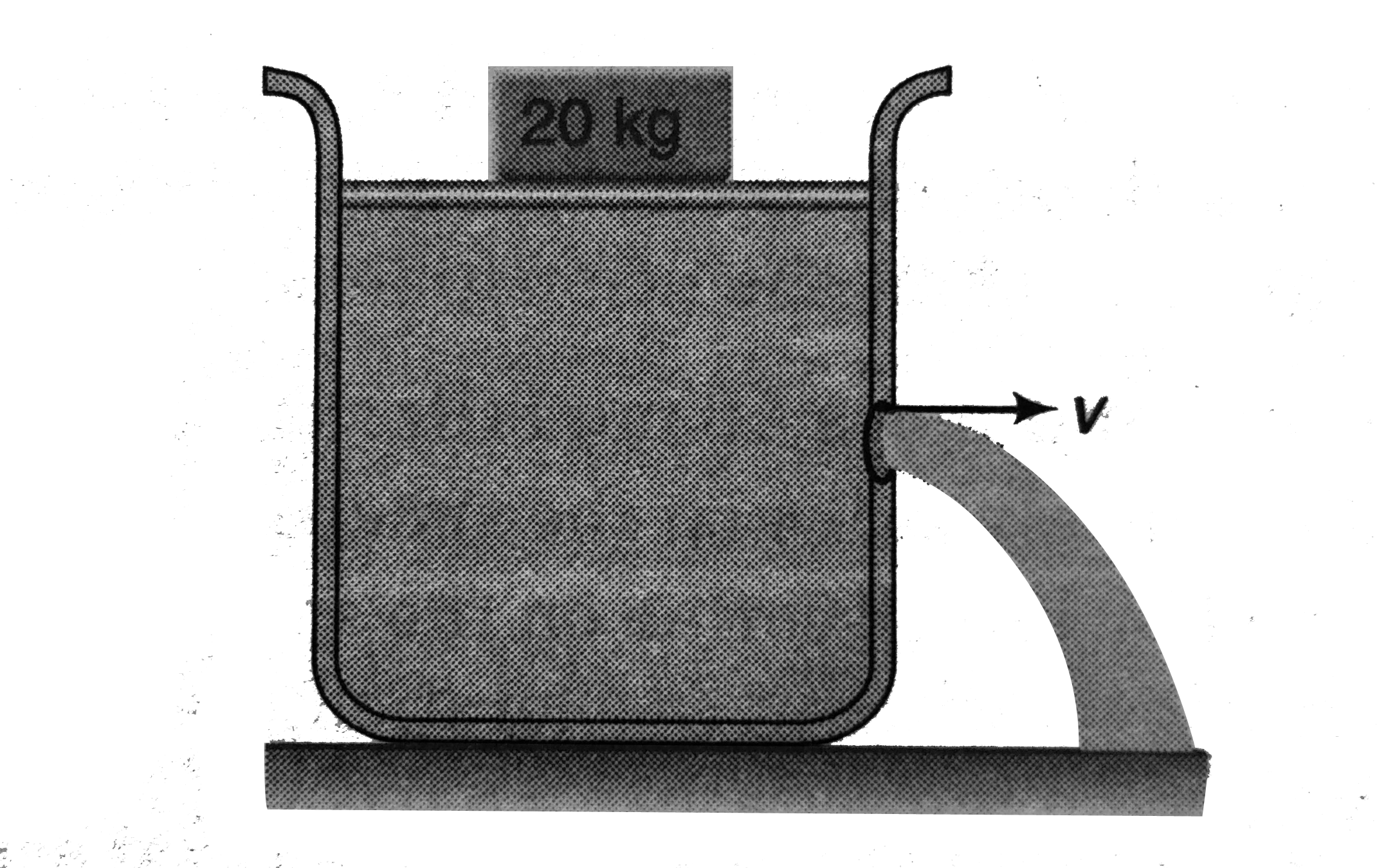A piston of cross-sectional area 100cm2 is used in a hydraulic pressure to exert a force of 107 dyne on the water. The cross-sectional area of the other piston which support a truck of mass 2000 kg is
9.8×102cm2
9.8×103cm2
1.96×103cm2
1.96×104cm2
The correct Answer is:D
To solve the problem, we will use Pascal's law, which states that the pressure applied to a confined fluid is transmitted undiminished in every direction throughout the fluid. This means that the force exerted by one piston can be used to find the force and area of another piston.
1. Identify Given Values:
- Cross-sectional area of the first piston, A1=100cm2
- Force exerted by the first piston, F1=107dyne
- Mass of the truck, m=2000kg
2. Convert Units:
- Convert the force from dyne to Newton:
1dyne=10−5N
F1=107dyne=107×10−5N=102N=100N
3. Calculate the Weight of the Truck:
- The weight F2 of the truck can be calculated using the formula:
F2=m⋅g
where g≈9.8m/s2.
F2=2000kg×9.8m/s2=19600N
4. Apply Pascal's Law:
- According to Pascal's law, the pressure exerted by both pistons is equal:
F1A1=F2A2
- Rearranging to find A2:
A2=F2⋅A1F1
5. Substitute the Values:
- Substitute F1=100N, F2=19600N, and A1=100cm2:
A2=19600N⋅100cm2100N=19600cm2
6. Final Result:
- The cross-sectional area of the piston supporting the truck is:
A2=19600cm2
- Cross-sectional area of the first piston, A1=100cm2
- Force exerted by the first piston, F1=107dyne
- Mass of the truck, m=2000kg
- Convert the force from dyne to Newton:
1dyne=10−5N
F1=107dyne=107×10−5N=102N=100N
- The weight F2 of the truck can be calculated using the formula:
F2=m⋅g
where g≈9.8m/s2.
F2=2000kg×9.8m/s2=19600N
- According to Pascal's law, the pressure exerted by both pistons is equal:
F1A1=F2A2
- Rearranging to find A2:
A2=F2⋅A1F1
- Substitute F1=100N, F2=19600N, and A1=100cm2:
A2=19600N⋅100cm2100N=19600cm2
- The cross-sectional area of the piston supporting the truck is:
A2=19600cm2
Topper's Solved these Questions
- FLUID MECHANICSBOOK - DC PANDEY ENGLISHCHAPTER - FLUID MECHANICSEXERCISE - B) Medical entrance special format question
19 Videos
- FLUID MECHANICSBOOK - DC PANDEY ENGLISHCHAPTER - FLUID MECHANICSEXERCISE - Match the columns
6 Videos
- FLUID MECHANICSBOOK - DC PANDEY ENGLISHCHAPTER - FLUID MECHANICSEXERCISE - Check point 13.4
10 Videos
- EXPERIMENTSBOOK - DC PANDEY ENGLISHCHAPTER - EXPERIMENTSEXERCISE - Subjective
15 Videos
- GENERAL PHYSICSBOOK - DC PANDEY ENGLISHCHAPTER - GENERAL PHYSICSEXERCISE - INTEGER_TYPE
2 Videos
Similar Questions
Water from a tap emerges vertically downward with an initial speed of 3.0 m/s. The cross-sectional area of the tap is 10−4m2 . Assume that the pressure is constant throughout the stream of water and that the flow is steady. The cross-sectional area of the stream 2 m below the tap is:
View SolutionWater from a tap emerges vertically downwards with an initial spped of 1.0ms−1. The cross-sectional area of the tap is 10−4m2. Assume that the pressure is constant throughout the stream of water, and that the flow is steady. The cross-sectional area of the stream 0.15 m below the tap is
View Solution
Knowledge Check
The two femurs each of cross-sectional area 10cm2 support the upper part of a human body of mass 40 kg. the average pressure sustained by the femurs is (take g=10ms−2)
A2×102Nm−2B2×104Nm−2C2×105Nm−2D2×106Nm−2
A long cylindrical tank of cross-sectional area 0.5m2 is filled with water. It has a small hole at a height 50cm from the bottom. A movable piston of cross-sectional area almost equal to 0.5m2 is fitted on the top of the tank such that it can slide in the tank freely. A load of 20kg is applied on the top of the water by piston, as shown in the figure. Calculate the speed of the water jet with which it hits the surface when piston is 1m above the bottom. (Ignore the mass of the piston)

View SolutionWater from a tap emerges vertically downwards with initial velocity 4ms−1. The cross-sectional area of the tap is A. The flow is steady and pressure is constant throughout the stream of water. The distance h vertically below the tap, where the cross-sectional area of the stream becomes (23)A is (g=10m/s2)
View SolutionA circular coil with a cross-sectional area of 4cm2 has 10 turns. It is placed at the center of a long solenoid that has 15 turns/cm and a cross sectional area of 10cm2, shown in the figure. The axis of the coil conicides with the axis of the solenoid. What is their mutual inductance?

View SolutionWhat is the area of cross-section of a body in m2, when it exerts a force of 50 N and produces a pressure of 2000 Pa?
View SolutionA force of 25 N acts on a body of area of cross-section 20 cm2. Calculate the pressure exerted by the body in pascals.
View SolutionA horizontal pipeline carries water in a streamline flow. At a point along the pipe, where the cross- sectional area is 10cm2, the water velocity is 1ms−1 and the pressure is 2000 Pa. The pressure of water at another point where the cross-sectional area is 5cm2, is........Pa. (Density of water =103kg.m−3)
View SolutionA horizontal pipeline carries water in a streamline flow. At a point along the pipe, where the cross- sectional area is 10cm2, the water velocity is 1ms−1 and the pressure is 2000 Pa. The pressure of water at another point where the cross-sectional area is 5cm2, is........Pa. (Density of water =103kg.m−3)
View Solution
